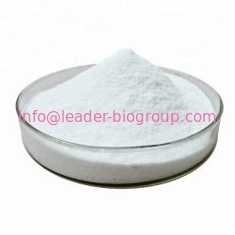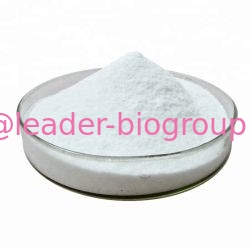
Google Factory Sales Highest Quality Trehalose Anhydrous CAS Trehalose Anhydrous For stock delivery
-
Purity99.9%
-
UseHealth Care
-
OriginChina
-
Package1KG/Tin 25KG/Drum*Carton
-
ManufacturerXI'AN LEADER BIOCHEMICAL ENGINEERING CO.,LTD
-
Place of OriginCHINA
-
Brand Nameinfo@leader-biogroup.com
-
CertificationISO,GMP,SGS,HALA,KOSER,HACCP
-
Model NumberLD
-
Minimum Order Quantity25KGS
-
PriceNegotiate Depend on order quantity
-
Packaging Details25KG/Drum
-
Delivery Time2-3 working days
-
Payment TermsWestern Union, MoneyGram, T/T, L/C
-
Supply Ability10MTS/Month
Google Factory Sales Highest Quality Trehalose Anhydrous CAS Trehalose Anhydrous For stock delivery
| Product Name: | TREHALOSE |
| Synonyms: | D-(+)-TREHALOSE;D-TREHALOSE;(2R,2'R,3S,3'S,4S,4'S,5R,5'R,6R,6'R)-6,6'-oxybis(2-(hydroxyMethyl)tetrahydro-2H-pyran-3,4,5-triol);TREHALOSE(P);ALPHA-D-TREHALOSE;ALPHA,ALPHA-D-TREHALOSE;MYCOSE;TREHALOSE |
| CAS: | 99-20-7 |
| MF: | C12H22O11 |
| MW: | 342.3 |
| EINECS: | 202-739-6 |
| Product Categories: | Basic Sugars (Mono & Oligosaccharides);Biochemistry;Disaccharides;Sugars;Natural Plant Extract;Sweeteners |
| Mol File: | 99-20-7.mol |
| TREHALOSE Chemical Properties |
| Melting point | 203 °C |
| Boiling point | 397.76°C (rough estimate) |
| density | 1.5800 |
| refractive index | 197 ° (C=7, H2O) |
| RTECS | LZ5776770 |
| solubility | Soluble in water; very slightly soluble in ethanol (95%); practically insoluble in r. |
| pka | 12.53±0.70(Predicted) |
| form | Powder |
| color | White to Off-white |
| Water Solubility | Soluble in water. |
| Sensitive | Hygroscopic |
| Merck | 14,9580 |
| CAS DataBase Reference | 99-20-7(CAS DataBase Reference) |
| EPA Substance Registry System | Trehalose (99-20-7) |
|
|
Trehalose is a nonreducing disaccharide in which the two glucose molecules are linked togr in an α,α-1,1-glycosidic linkage. α,α-trehalose is the only anomer of trehalose, which has been isolated from and biosynthesized in living organisms. This sugar is present in a wide variety of organisms, including bacteria, yeast, fungi, insects, invertebrates, and lower and higher plants, where it may serve as a source of energy and carbon. It can be used as a stabilizer and protectant of proteins and membranes: protection from dehydration; protection from damage by oxygen radicals (against oxidation); protection from cold; as a sensing compound and/or growth regulator; as a structural component of the bacterial cell wall. Trehalose is used in the biopharmaceutical preservation of labile protein drugs and in the cryopreservation of human cells. It is used as an ingredient for dried and processed food, and as an artificial sweetener, with a relative sweetness of 40-45% that of sucrose. Several safety studies on trehalose have been evaluated by JECFA, 2001 and allocated an ADI of ‘not specified’. Trehalose is approved in Japan, Korea, Taiwan, and UK. Trehalose could be possibly used in an eye drop solution to against corneal damage due to desiccation (dry eye syndrome). |
|
|
[1] Alan D. Elbein, Y.T. Pan, Irena Pastuszak, David Carroll (2003): New insights on trehalose: a multifunctional molecule, 13, 17R-27R. [2] A.B Richards, S Krakowka, L.B Dexter, H Schmid, A.P.M Wolterbeek, D.H Waalkens-Berendsen, A Shigoyuki, M Kurimoto (2002): Trehalose: a review of properties, history of use and human tolerance, and results of multiple safety studies, 40, 871-898. [3] Alex Patist, Hans Zoerb (2005): Preservation mechnisams of trehalose in food and Biosystems, 40, 107-113. [4] Sanchari Chattopadhyay, Utpal Raychaudhuri, Runu Chakraborty (2014): Artificial sweeteners – a review, 51, 611-621. [5] http://www.life-enhancement.com/magazine/article/2453-trehalose-for-dry-eyes |
| Chemical Properties | white to off-white crystalline powder |
| Chemical Properties | Trehalose occurs as virtually odorless, white or almost white crystals with a sweet taste (approximately 45% of the sweetness of sucrose). |
| Uses | trehalose is a humectant and moisturizer, it helps bind water in the skin and increase the skin’s moisture content. It is a naturally occurring plant sugar. |
| Production Methods | Trehalose is prepared from liquefied starch by a multistep enzymatic process. The commercial product is the dihydrate. |
| Definition | ChEBI: A trehalose in which both glucose residues have alpha-configuration at the anomeric carbon. |
| Pharmaceutical Applications | Trehalose is used for the lyoprotection of therapeutic proteins, particularly for parenteral administration. Other pharmaceutically relevant applications include use as an excipient for diagnostic assay tablets; for stabilization during the freeze–thaw and lyophilization of liposomes; and for stabilization of blood cells, cosmetics, and monoclonal antibodies. Trehalose may also be used in formulations for topical application. |
| Safety | Trehalose is used in cosmetics, foods, and parenteral and nonparenteral pharmaceutical formulations. It is generally regarded as a relatively nontoxic and nonirritant material when used as an excipient. In the gut, trehalose is rapidly metabolized to glucose by the specific enzyme trehalase. A small minority of the population exhibits a primary (hereditary) or secondary (acquired) trehalase deficiency and thus may experience intestinal discomfort after ingestion of excessive amounts of trehalose owing to the osmotic activity of undigested trehalose in the gut. However, smaller amounts of trehalose are tolerated by such individuals without any symptoms. Trehalose is used as a sweetener and is reported to have substantially less cariogenic potential than sucrose. LD50 (dog, IV): >1 g/kg LD50 (dog, oral): >5 g/kg LD50 (mouse, IV): >1 g/kg LD50 (mouse, oral): >5 g/kg LD50 (rat, IV): >1 g/kg LD50 (rat, oral): >5 g/kg |
| storage | Trehalose is a relatively stable material. At 60°C for 5 hours it loses not more than 1.5% w/w of water (the dihydrate water of crystallization is retained). Open stored powder may liquefy at high relative humidity (≥90%). Trehalose should be stored in a cool, dry place in a well-sealed container. |
| Incompatibilities | Trehalose is incompatible with strong oxidizing agents, especially in the presence of heat. |
| Regulatory Status | GRAS listed. In the UK trehalose may be used in certain food applications. Included in parenteral and nonparenteral investigational formulations. |
